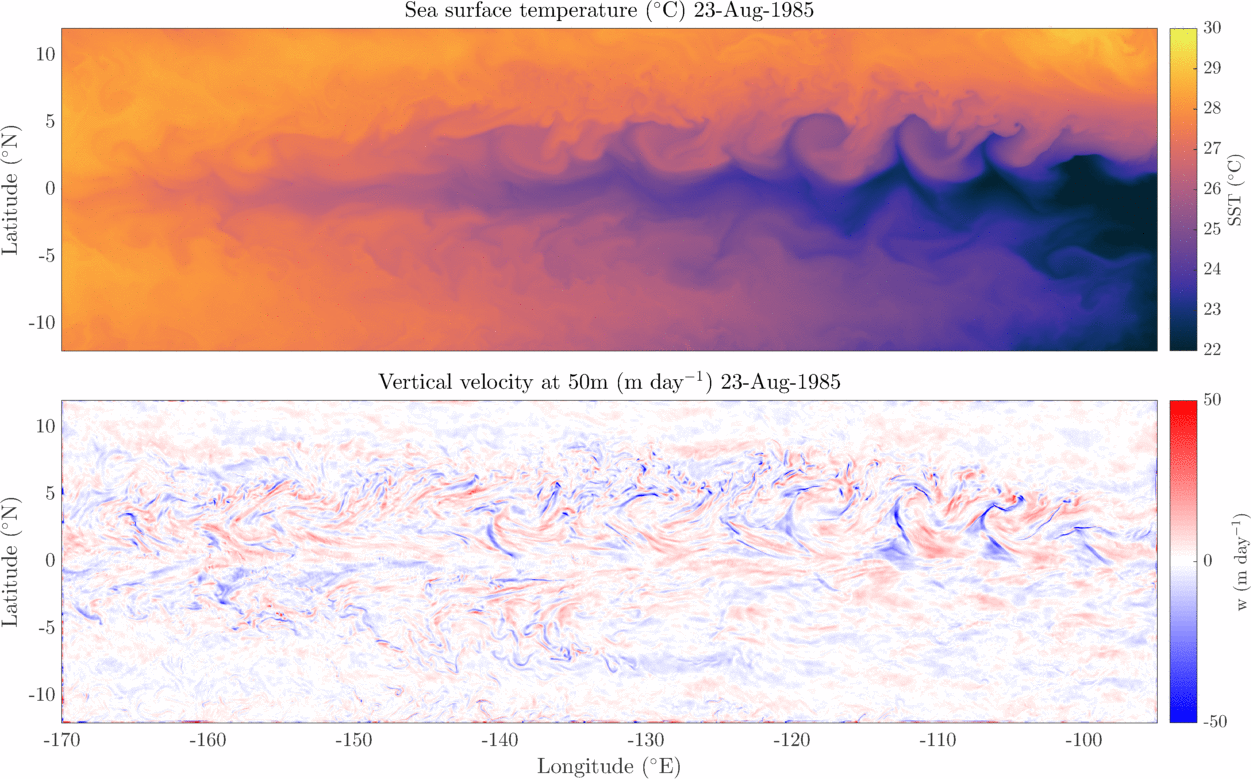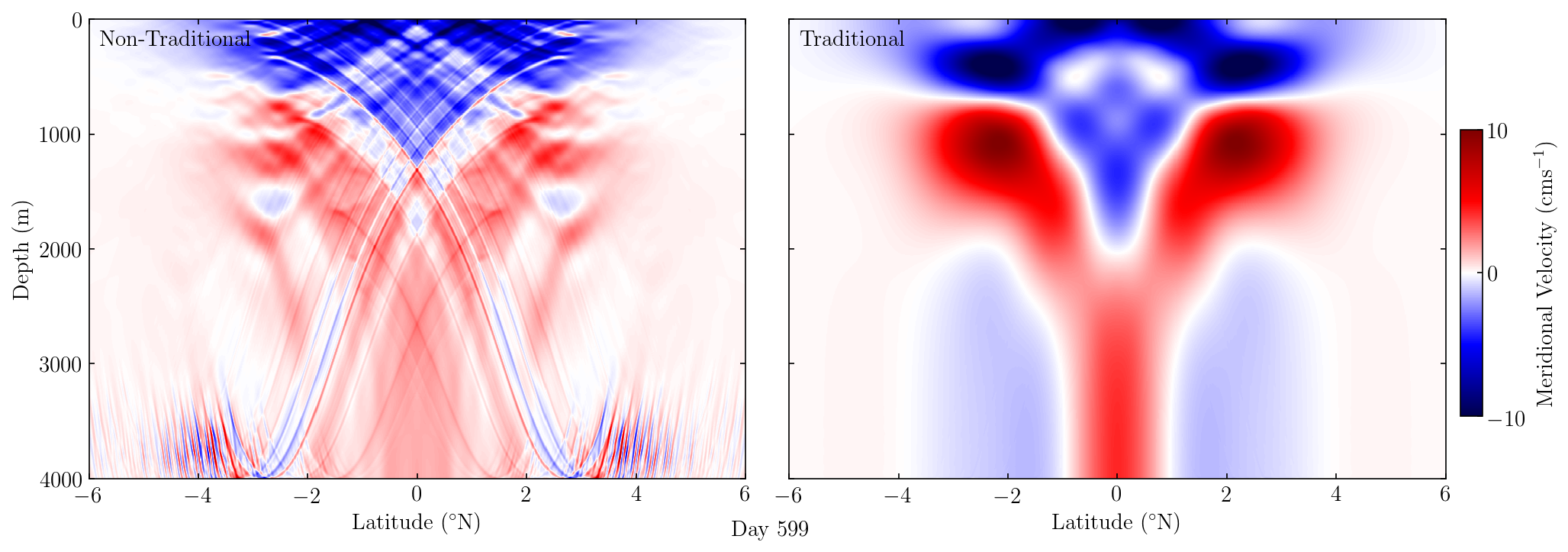Visualisations
This page contains a collection of cool visualisations from my work.
Equatorially trapped inertia-gravity waves
The above animation (click on the image for Vimeo link) shows two simulations of equatorially trapped inertia-gravity waves generated by a periodic 10-day forcing near the surface. In the left panel the horizontal component of the Coriolis force is included but in the right panel it is excluded (the so-called traditional approximation). Including this component changes the wave physics in the deep ocean and can create trapping regions where energy builds up and small scale shear can develop, potentially contributing to deep ocean mixing. These simulations were performed using the Dedalus spectral PDEs solver. For more information: Deep Equatorial Waves Project Summary, GRL article: Holmes et al. (2016): Evidence for Seafloor-Intensified Mixing by Surface-Generated Equatorial Waves)
Tropical Instability Waves

The above animation shows SST (top) and vertical velocity at 50m (bottom) from a 1/20-degree ROMS simulation of the eastern equatorial Pacific. This simulation was performed in collaboration with Daniel Whitt at NCAR as part of a project to investigate the dynamics of mixing and upwelling in the Pacific cold tongue.
Tracer transport in Abyssal Mixing Layers
The above animation shows a tracer released near a sloping boundary within an idealized abyssal mixing layer. The tracer spreads vertically due to bottom-intensified vertical diffusion and up the slope within a thin Bottom Boundary Layer (BBL) where the buoyancy flux converges and drives diapycnal upwelling. The rate of increase of the variance of the tracer in density space (left panel) reduces once the tracer encounters the boundary. For more information: JPO article: Holmes, de Lavergne and McDougall (2019): Tracer Transport within Abyssal Mixing Layers, Climate Extremes Research Brief

